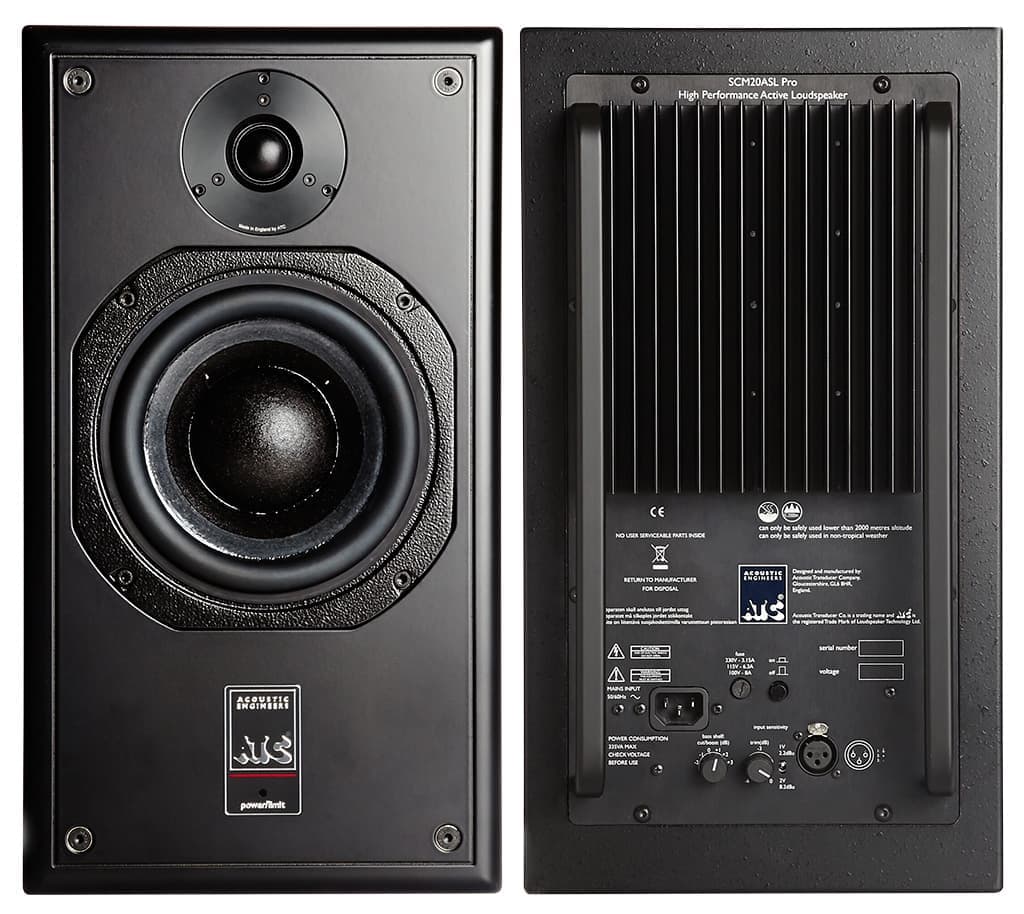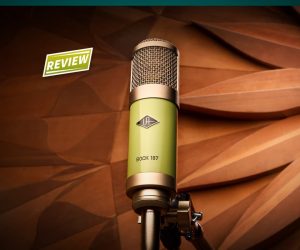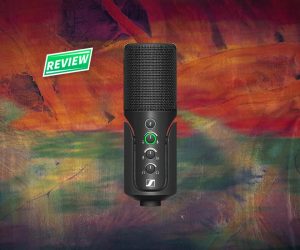
Review: ATC SCM20 ASL Mk2 Pro
For ATC’s half-century anniversary, its popular SCM20s have been given their biggest update yet, with a new in-house tweeter and a return to classic form.
Review: Robin Gist
Australian-born Billy Woodman founded ATC in 1974 with the intent of producing drivers for the pro audio market that could handle more power with less distortion while still maintaining wide frequency bandwidth, uniform dispersion and extended dynamic range. 1976 saw the introduction of ATC’s SM 75-150S soft dome midrange driver which, in various cabinet configurations, became somewhat of a benchmark for studio monitoring at that time.
Looking to improve upon this original design and wanting to eliminate the effects of magnetic hysteresis as a significant source of driver distortion, Woodman and his research team developed what ATC call a Super Linear driver in 1996. One of the key aspects of the new design was hand and edge-wound short voice coils made from oxygen free copper that operate in a front- and rear-vented long magnetic gap. This reduces heat generation and helps increase power handling and long term reliability. This new design, along with structural improvements, also reduced third harmonic distortion by 10-15dB between the frequency range of 100Hz to 3kHz and it is the 150mm (six-inch) version of this driver that is at the heart of the new SCM20 ASL Pro Mk2 monitor.
New to the SCM20s is another ATC speaker innovation — the SH-25-76S 25mm (one-inch) dual suspension soft dome neodymium tweeter. This is the first tweeter to be designed and built in-house by ATC and is the result of six years of research. The design, in keeping with the key elements of the mid/bass driver, utilises a dual suspension configuration. This approach negates the need for ferro fluid in the coil space which enhances long term consistency of operation and avoids the negative effects of the fluid drying out over time.
These powered, two-way reference nearfields also come in a passive version, and are suitable for small to medium control rooms, both in stereo and surround configurations.
TOOLED CABINET
Weighing in at nearly 30kg each, lifting the speakers out of their boxes gave me an immediate impression of something very solid and substantial. The previous SCM20 model looked wholly different, with a cast aluminium casing with an integrated heat sink for the onboard amp. But the manufacturing tool used to press the shape was slowly getting out of spec, so it was retired in favour of a more traditional-looking cabinet design that fits in with the rest of ATC’s range. The German-made MDF cabinets are built to a fine tolerance and can be custom ordered in a variety of veneered woods — the review models came in Henry Ford studio black, which suited my decor just fine.
As part of ATC’s attention to structural detail, damped elastomeric (meaning having the properties of rubber) panels are adhered to the cabinet’s inner walls. This helps reduce cabinet panel resonances. The enclosure’s front panel is also radiused to minimise cabinet diffraction in the listening environment.
CLASSY AMPS
The MOSFET biamps that power the drivers are also built in-house at ATC. Each driver has its own common grounded amp which operates in Class A mode up to around 66% of rated power, with Class B operation taking over above that point to provide extra headroom. The LF amp has a 200W max continuous output and the HF amp is rated at 50W, which translates into 108dB SPL per pair at one metre. The amps are thermally protected and include a fast acting FET limiter for each band to protect the drivers in the event of unexpected peaks — good peace of mind for when you’re soloing a snare drum at high volume.
At the rear of each cabinet is the power switch, XLR and power connector, power fuse, input sensitivity trim pot, input sensitivity switch and the 80Hz low frequency shelf cut/boost rotary control. This control offers between 2dB of cut and 3dB of boost in 1dB steps, which is useful for fine tuning or compensating for the low end balance in your control room/home studio. There is also a power/clip LED indicator on the front panel of the speakers.
NEED TO KNOW
ATC SCM20 ASL Mk2 Pro
Nearfield Monitors

MIXING IT UP
The arrival of the review units was timely as I had just begun mixing an album for a client, which provided me with a great opportunity for a real world test. Before jumping into the mix, I spent quite a bit of time familiarising myself with them by listening to a raft of my favourite commercial recordings, over a variety of genres. I, of course, also listened to some of my most recent mixes and gained an overall sense of the SCM20s in the process.
The overall tone of the ATCs is flat and uncoloured which is what you would want and expect from a serious reference nearfield monitor. I found the imaging to be very accurate and consistent. These monitors also exhibited a high level of sonic transparency and I had the experience of hearing new details I’d not noticed or heard in commercial recordings I’d listened to many times.
The ideal horizontal acoustic axis for these monitors is in line with the top mounting bolts for the mid/bass driver. I dutifully set the speakers to this height prior to my listening tests. This is noteworthy because, with your ears placed in this horizontal plane, the dispersion according to the spec sheet is 80 degrees. This means you have a very wide listening area, and are not confined to a small, tight ‘sweet spot’ — which can often be the case with some nearfield monitors. Great for when the client or the producer is sitting at the back of your control room on the couch. I tested the horizontal dispersion by wheeling around on my chair to keep my ears at roughly the right height. I found that the frequency response and volume level was indeed uniform and I had no sense of there being a critical sweet spot.
ACOUSTIC SWEET SPOT
In my general listening tests I found these monitors excelled, particularly on acoustic and classical music. That is not to say that rock, pop, funk and other genres didn’t sound great too, but the general lack of overall compression and the space afforded by acoustic music was exemplified by these speakers. The revealed detail and imaging made for a very realistic and satisfying listening experience.
Another aspect of these monitors I thought was significant, was the consistency of frequency response at different volume levels. I found this to be the case in both my commercial recording listening tests and when I was mixing. I like to trim vocal volume automation at a fairly quiet level, and with some nearfields the relationship set at low volume can seem to change radically once you start turning up the monitor level. This was definitely not the case with the ATC’s and I felt the vocal-to-music ratio established at a low level remained consistent as I cranked up the volume.
If you are working in the area of EDM and are not using large, soffit mounted monitors for low end reference, then a sub-woofer would be necessary but this would be the case with any small diameter driver nearfields, as 12- to 18-inch drivers don’t sit so well on the ledge of a mixing console! This is equally applicable to film and post work as the extreme low end was the only thing I found lacking. The stated frequency response is 60Hz to 22kHz, and it’s not reasonable or even feasible to expect any 150mm (six-inch) drivers to go lower.
QUALITY THAT QUALIFIES
How did I go with mixing the album on these speakers? Well, the client absolutely loved the mixes and that is about as good as gets! I will be sad to see the review pair go back to the supplier.
The ATC SCM20s would represent a substantial investment for the home user/prosumer but you get what you pay for. For a studio owner, the ATCs provide reliable and accurate nearfield reference monitoring that will be appreciated by your engineers and clients alike.
The state-of-the-art driver and electronics designs coupled with high tolerance in-house component manufacturing indicate ATC’s commitment to producing a quality and reliable product for the long term. I would not hesitate to recommend these speakers to anyone who has a sizeable chunk of cash to spend on serious nearfield reference monitors.
















RESPONSES